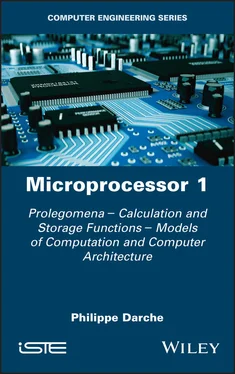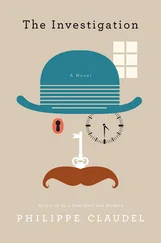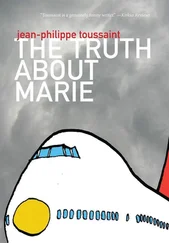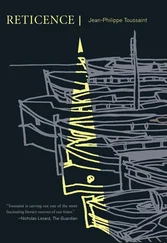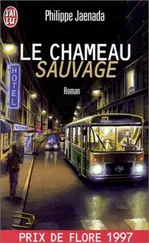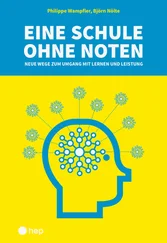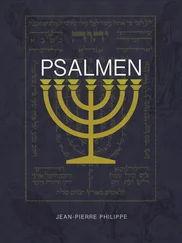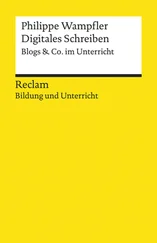Philippe Darche - Microprocessor 1
Здесь есть возможность читать онлайн «Philippe Darche - Microprocessor 1» — ознакомительный отрывок электронной книги совершенно бесплатно, а после прочтения отрывка купить полную версию. В некоторых случаях можно слушать аудио, скачать через торрент в формате fb2 и присутствует краткое содержание. Жанр: unrecognised, на английском языке. Описание произведения, (предисловие) а так же отзывы посетителей доступны на портале библиотеки ЛибКат.
- Название:Microprocessor 1
- Автор:
- Жанр:
- Год:неизвестен
- ISBN:нет данных
- Рейтинг книги:5 / 5. Голосов: 1
-
Избранное:Добавить в избранное
- Отзывы:
-
Ваша оценка:
- 100
- 1
- 2
- 3
- 4
- 5
Microprocessor 1: краткое содержание, описание и аннотация
Предлагаем к чтению аннотацию, описание, краткое содержание или предисловие (зависит от того, что написал сам автор книги «Microprocessor 1»). Если вы не нашли необходимую информацию о книге — напишите в комментариях, мы постараемся отыскать её.
Microprocessor 1 — читать онлайн ознакомительный отрывок
Ниже представлен текст книги, разбитый по страницам. Система сохранения места последней прочитанной страницы, позволяет с удобством читать онлайн бесплатно книгу «Microprocessor 1», без необходимости каждый раз заново искать на чём Вы остановились. Поставьте закладку, и сможете в любой момент перейти на страницу, на которой закончили чтение.
Интервал:
Закладка:
Table of Contents
1 Cover
2 Title page Series Editor Jean-Charles Pomerol
3 Copyright First published 2020 in Great Britain and the United States by ISTE Ltd and John Wiley & Sons, Inc. Apart from any fair dealing for the purposes of research or private study, or criticism or review, as permitted under the Copyright, Designs and Patents Act 1988, this publication may only be reproduced, stored or transmitted, in any form or by any means, with the prior permission in writing of the publishers, or in the case of reprographic reproduction in accordance with the terms and licenses issued by the CLA. Enquiries concerning reproduction outside these terms should be sent to the publishers at the undermentioned address: ISTE Ltd 27-37 St George’s Road London SW19 4EU UK www.iste.co.uk John Wiley & Sons, Inc. 111 River Street Hoboken, NJ 07030 USA www.wiley.com © ISTE Ltd 2020 The rights of Philippe Darche to be identified as the author of this work have been asserted by him in accordance with the Copyright, Designs and Patents Act 1988. Library of Congress Control Number: 2020938715 British Library Cataloguing-in-Publication Data A CIP record for this book is available from the British Library ISBN 978-1-78630-563-3
4 Quotation Quotation Every advantage has its disadvantages and vice versa . Shadokian philosophy 1 1 1 The Shadoks are the main characters from an experimental cartoon produced by the Research Office of the Office de Radiodiffusion-Télévision Française (ORTF). The twominute-long episodes of this daily cult series were broadcast on ORTF’s first channel (the only one at the time!) beginning in 1968. The birds were drawn simply and quickly using an experimental device called an animograph.The Shadoks are ridiculous, stupid and mean. Their intellectual capacities are completely unusual. For example, they are known for bouncing up and down, but it is not clear why! Their vocabulary consists of four words: GA, BU, ZO and MEU, which are also the four digits in their number system (base 4) and the musical notes in their four-tone scale. Their philosophy is comprised of famous mottos such as the one cited in this book.
5 Preface Preface Computer systems (hardware and software) are becoming increasingly complex, embedded and transparent. It therefore is becoming difficult to delve into basic concepts in order to fully understand how they work. In order to accomplish this, one approach is to take an interest in the history of the domain. A second way is to soak up technology by reading datasheets for electronic components and patents. Last but not least is reading research articles. I have tried to follow all three paths throughout the writing of this series of books, with the aim of explaining the hardware and software operations of the microprocessor, the modern and integrated form of the central unit.
6 Introduction Introduction In this book, we will focus on the microprocessor, the integrated form of the central unit. It introduces basic concepts from the perspective of sequential execution. This first volume, presenting the field’s introductory concepts, is organized into three chapters. The first two present the calculation and memory functions which, along with communication, are the computer’s three primary functions. The last chapter defines concepts concerning computational models and computer architectures.
7 1 The Function of Computation
1.1. Beginnings
1.2. Classes of computers
1.3. Analog approach
1.4. Hardware-software relationship
1.5. Integration and its limits
1.6. Conclusion
8 2 The Function of Memory
2.1. Definition
2.2. Related concepts
2.3. Modeling
2.4. Classification
2.5. Conclusion
9 3 Computation Model and Architecture: Illustration with the von Neumann Approach
3.1. Basic concepts
3.2. The original von Neumann machine
3.3. Modern von Neumann machines
3.4. Variations on a theme
3.5. Instruction set architecture
3.6. Basic definitions for this book
3.7. Conclusion
10 Conclusion of Volume 1
11 Exercises
12 Acronyms
13 References
14 Index
15 End User License Agreement
List of Illustrations
1 Chapter 1 Figure 1.1. Ishango’s incised bones (source: unknown). For a color version of th...
Figure 1.2. A quipu (source: unknown). For a color version of this figure, see w...
Figure 1.3. Roman abacus (a) between the 2nd and 5th Centuries (© Inria/AMISA/Ph...
Figure 1.4. An example of a Pascaline at the Musée des Arts et Métiers (source: ...
Figure 1.5. Replica of the first Babbage difference machine 3. For a color versio...
Figure 1.6. Babbage’s analytical machine (© Science Museum/Science & Society Pic...
Figure 1.7. One of the plans for Babbage’s analytical machine (© Science Museum/...
Figure 1.8. Falcon’s loom. For a color version of this figure, see www.iste.co.u...
Figure 1.9. Statistical machine (Hollerith 1887)
Figure 1.10. Evolution of concepts and technologies in the development of calcul...
Figure 1.11. A modern electromechanical relay, its equivalent electrical diagram...
Figure 1.12. An RCA 5965 type electronic tube and an IBM 701 electronic board (s...
Figure 1.13. A transistor and an electronic transistor board with seven inverter...
Figure 1.14. One of the 15 DIP integrated circuit CPU boards from a DEC PDP-11/2...
Figure 1.15. Evolution of computing performance over time (from (Bell 2008b))
Figure 1.16. PC motherboard (5150) from IBM (1981). For a color version of this ...
Figure 1.17. Axes of evolution over time of the price of classes (from (Bell 200...
Figure 1.18. The iconic Cray-1 supercomputer referred to as the “World’s most ex...
Figure 1.19. Evolution over time of supercomputer performance (according to Succ...
Figure 1.20. IBM System/360 mainframe computer
Figure 1.21. The IBM Application System (AS/400) family of minicomputers
Figure 1.22. Evolution over time of the prices of minicomputers (in thousands of...
Figure 1.23. An Octane graphics workstation from Silicon Graphics, Inc. (SGI). F...
Figure 1.24. The first microcomputers: the Micral N from R2E and the ALTAIR 8800...Figure 1.25. Increasingly blurry boundaries. For a color version of this figure,...Figure 1.26. Categories of computers (according to Bell (2008a))Figure 1.27. The client–server model. For a color version of this figure, see ww...Figure 1.28. A blade server. For a color version of this figure, see www.iste.co...Figure 1.29. Example of a Beowulf server architecture. For a color version of th...Figure 1.30. The Antikythera mechanism (left) and a reconstruction (right), by M...Figure 1.31. The PACE 231R-V analog computer system from EAI (EAI 1964)Figure 1.32. Layered view of software infrastructureFigure 1.33. Historical timeline of the evolution of concepts for the families o...Figure 1.34. Need for computing for multimedia applications (based on 2003 ITRS ...Figure 1.35. Evolution of computer roles (from Nelson and Bell (1986))Figure 1.36. Evolution over time of the number of transistors of an integrated c...Figure 1.37. The fineness of etching of integrated circuits over the years (tech...Figure 1.38. The energy wall (from Xanthopoulos 2009 on data from ISSCC). For a ...Figure 1.39. Chip area achievable with progress in integration (according to (Ma...
2 Chapter 2Figure 2.1. Vocabulary for binary formatsFigure 2.2. Memory access policiesFigure 2.3. Memory organization and addressingFigure 2.4. Memory areaFigure 2.5. Memory hierarchyFigure 2.6. Types of storage technologies in modern computersFigure 2.7. Simplified classification of random access semiconductor memoryFigure 2.8. Detailed classification of permanent semiconductor memory
Читать дальшеИнтервал:
Закладка:
Похожие книги на «Microprocessor 1»
Представляем Вашему вниманию похожие книги на «Microprocessor 1» списком для выбора. Мы отобрали схожую по названию и смыслу литературу в надежде предоставить читателям больше вариантов отыскать новые, интересные, ещё непрочитанные произведения.
Обсуждение, отзывы о книге «Microprocessor 1» и просто собственные мнения читателей. Оставьте ваши комментарии, напишите, что Вы думаете о произведении, его смысле или главных героях. Укажите что конкретно понравилось, а что нет, и почему Вы так считаете.
